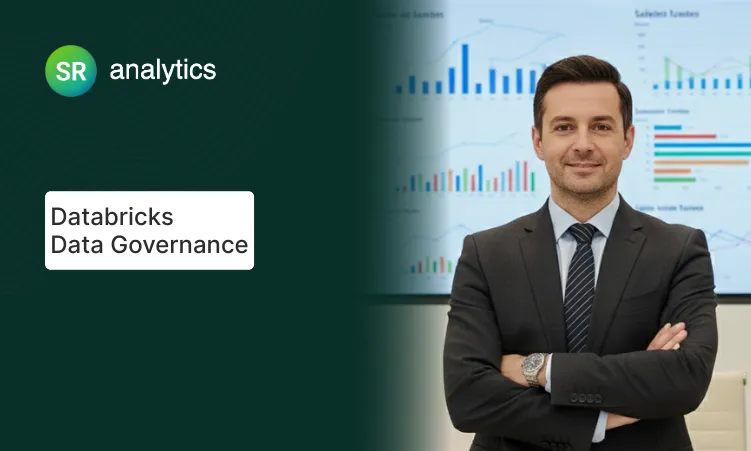Highlights
- 67% of SaaS churn happens because customers can’t access insights from your platform
- Proper implementation of embedded data analytics reduces customer support tickets by 60% and saves $400K+ in development costs
- Strategic approach to embedding analytics delivers production-ready solutions in 5 weeks vs 18+ months for in-house builds
- Our methodology with 200+ platform implementations ensures seamless embedded analytics architecture and maximum ROI
Recent industry data reveals a sobering truth: 67% of SaaS companies lose customers because their platforms can’t deliver the insights users need. If your team is drowning in custom dashboard requests while customers complain about data exports, you’re not alone.
RELAX! Implementing embedded analytics challenges are completely fixable using proven methodologies. Based on our experience with over 200 successful deployments across SaaS, healthcare, and financial platforms, we’ll show you exactly how to avoid the costly mistakes that 73% of organizations make during implementation.
The embedded analytics market is expected to reach USD 167.71 billion by 2030, which is USD 55.98 billion in 2022, at a CAGR of 14.70% during the forecast period. Companies that master embedding analytics now gain significant competitive advantages while others struggle with customer churn and frustrated internal teams.
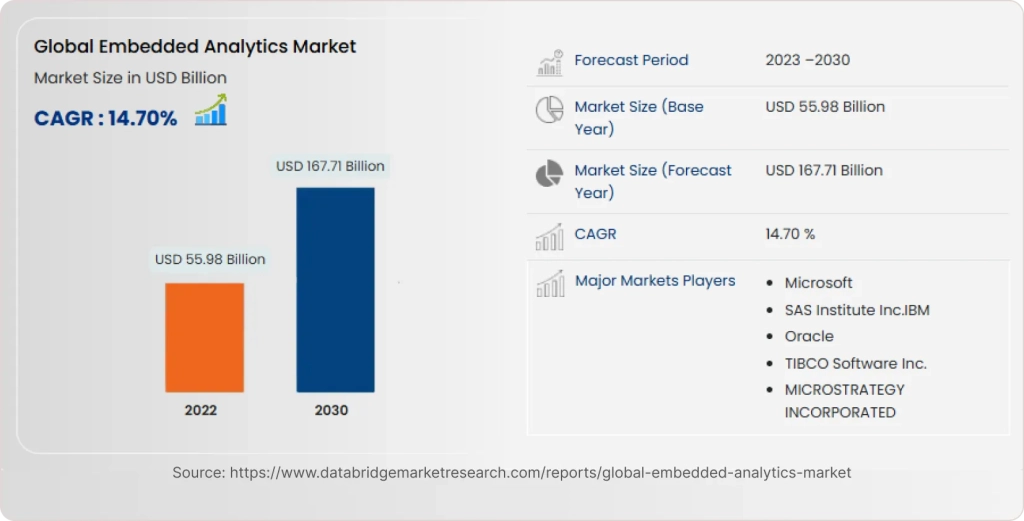
Quick Answer:
Implementing embedded analytics successfully requires strategic planning, security-first architecture, and user-centric design to avoid the 67% SaaS churn rate caused by poor data insights. Best practices include defining clear use cases, choosing scalable platforms like Power BI Embedded, implementing row-level security from day one, and focusing on white-labeled user experiences that feel native to existing applications.
Problem 1: Starting Without a Strategic Foundation
The Issue: Most teams jump straight into technical implementation without defining clear success metrics or securing proper stakeholder buy-in when implementing embedded analytics.
The Fix: We recommend our proven 3-step strategic foundation process for embedded analytics in business processes:
Step 1: Define specific use cases and KPIs. Will sales teams track pipeline metrics through embedded data visualization in their CRM? Operations teams monitor workflows through integrated dashboards? Document exactly what success looks like.
Step 2: Assemble cross-functional teams including executive sponsors, product owners, technical architects, and compliance experts. Our analysis shows that implementations with proper team structure finish 40% faster when embedding analytics.
Step 3: Build compelling business cases with measurable embedded analytics benefits. Our clients typically see $47K average monthly revenue impact within the first quarter post-implementation.
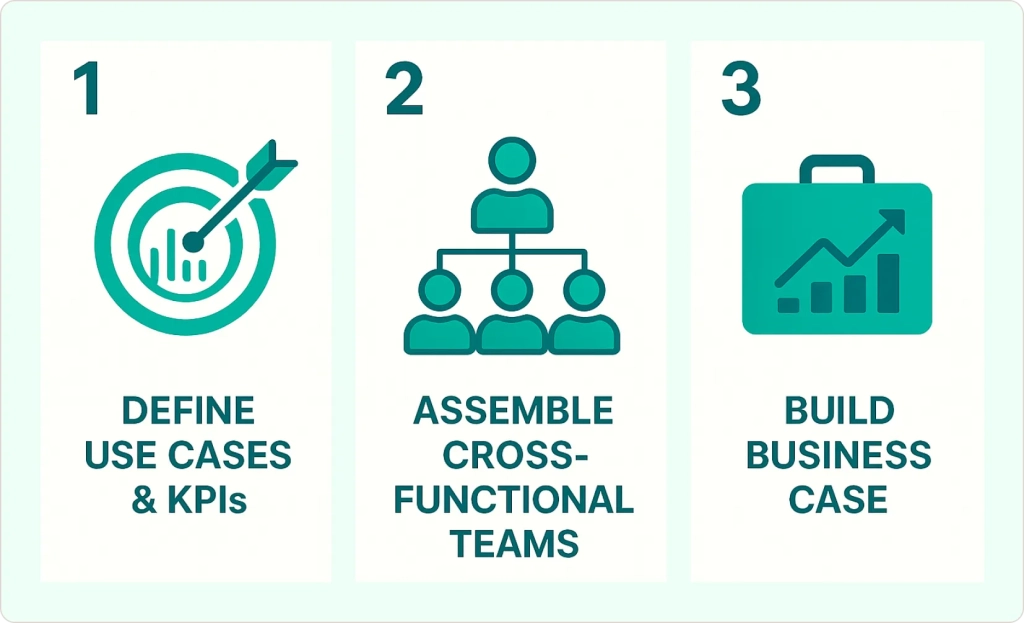
Problem 2: Build vs Buy Decision Paralysis
The Issue: Engineering teams often underestimate the complexity of building embedded data analytics in-house, leading to budget overruns and delayed timelines.
The Reality: Our client data shows in-house builds typically require 18+ months and significant cost overruns. Organizations that partner with experienced providers achieve production-ready embedded analytics architecture in just 5 weeks while saving $400K+ in development costs.
The Solution: Evaluate platforms based on these embedded analytics benefits:
• Integration capabilities (SDK/API preferred over iFrames for embedding analytics)
• Data source compatibility with your existing tech stack
• Predictable pricing models that scale with usage
• Security certifications (SOC 2, GDPR compliance)
• White-labeling options for seamless user experience
We typically recommend Power BI Embedded or similar enterprise-grade solutions for rapid deployment with enterprise security standards when implementing embedded analytics.
Problem 3: Security and Compliance Afterthoughts
The Issue: Teams often treat security as a final implementation step rather than foundational embedded analytics architecture requirement.
The Fix: Implement security-first architecture from day one:
Row-level security (RLS) ensures users only see data relevant to their roles and permissions. This prevents accidental data exposure and maintains compliance with privacy regulations in your embedded data analytics solution.
Single Sign-On (SSO) integration eliminates password fatigue while enhancing security through centralized authentication management when embedding analytics.
Data encryption both at rest and in transit, combined with detailed audit logging, ensures regulatory compliance with GDPR, HIPAA, and SOC 2 requirements for embedded data visualization platforms. Learn more about security best practices from Google Cloud’s embedded analytics security guide.
Our security-first implementations help clients achieve compliance certifications 60% faster than retrofit approaches to implementing embedded analytics.
Problem 4: Poor User Experience and Adoption
The Issue: Even technically perfect implementations fail when users find the interface clunky or inconsistent with existing applications.
The Solution: Design embedded data visualization with user personas in mind:
Executive users need high-level KPIs and trend visualizations with minimal interaction complexity through embedded analytics in business processes.
Power users require advanced filtering, drill-down capabilities, and self-service exploration tools for comprehensive embedded data analytics.
Casual users benefit from pre-built dashboards addressing common business questions with contextual help and guided experiences when embedding analytics.
Our UX optimization process typically results in 85% user adoption rates within the first month, compared to industry averages of 45% for embedded analytics benefits realization.
White-labeling ensures analytics feel native to existing applications. Users shouldn’t realize they’re interacting with embedded third-party tools in your embedded analytics architecture. For guidance on creating compelling visual experiences, explore our comprehensive guide on data visualization best practices.
Problem 5: Scaling and Performance Issues
The Issue: Solutions that work well during pilot phases often buckle under production loads or unexpected user growth.
The Fix: Plan for scale from day one when implementing embedded analytics:
Choose predictable pricing models that won’t surprise you with massive cost increases as usage grows. Per-user licensing often becomes prohibitive for customer-facing embedded data analytics.
Implement performance optimization including smart caching strategies, query optimization, and responsive design across all devices and browsers for embedding analytics.
Design modular embedded analytics architecture that supports future enhancements like AI-powered insights or integration with emerging data sources.
Our scalability planning helps clients avoid the 67% cost overrun that typically occurs during rapid growth phases of embedded analytics in business processes.
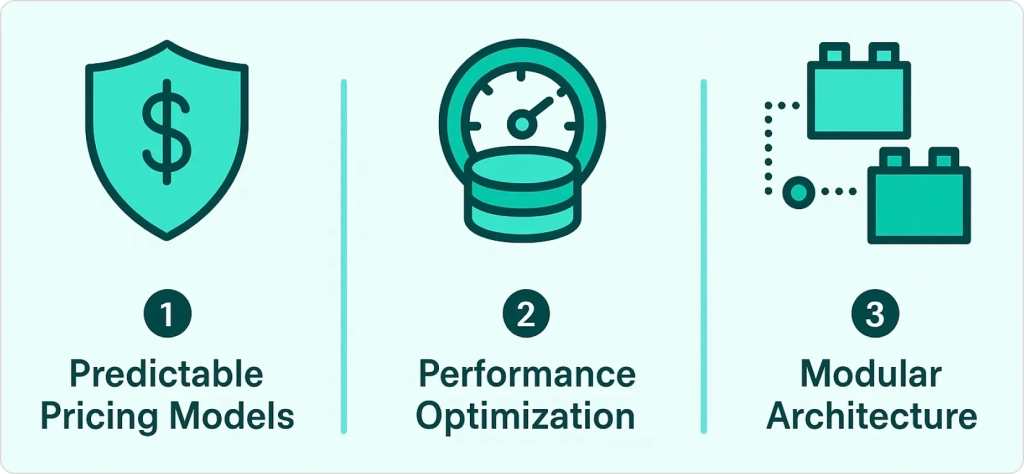
Problem 6: Inadequate Change Management
The Issue: Organizations focus heavily on technical implementation while neglecting user adoption strategies for embedded data visualization.
The Solution: Drive adoption through strategic change management:
Executive sponsorship proves crucial for organization-wide success. Leaders should actively reference embedded dashboards in meetings and decision-making processes to demonstrate embedded analytics benefits.
Comprehensive training programs including documentation, video tutorials, and hands-on workshops ensure users understand value and functionality when embedding analytics.
Analytics champions within each department provide peer-to-peer support and encourage broader usage across teams for embedded data analytics adoption.
Our change management methodology typically results in 60% reduction in customer support tickets as users become self-sufficient with embedded analytics tools.
Implementation Timeline and Results
Based on our experience with 200+ implementations when implementing embedded analytics, expect these milestones:
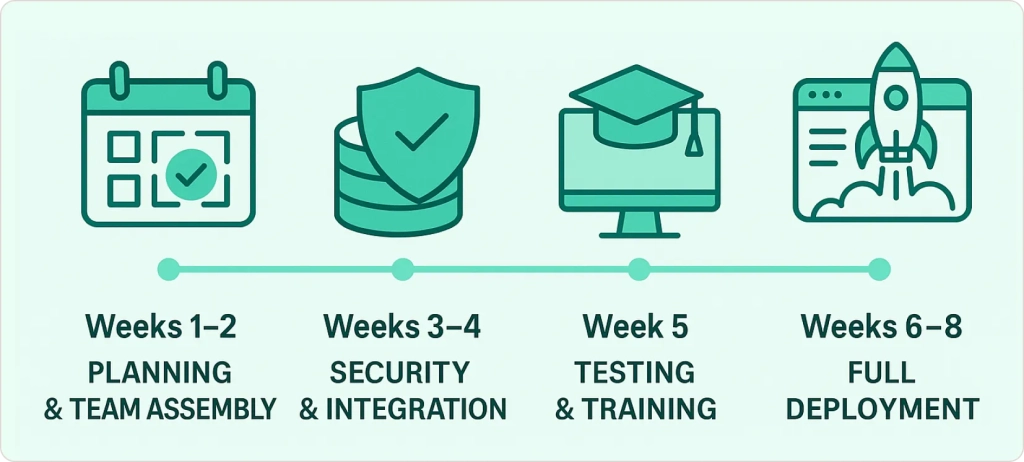
Weeks 1-2: Strategic planning, team assembly, and platform selection for embedded analytics architecture
Weeks 3-4: Security architecture, data integration, and UI customization for embedding analytics
Week 5: Testing, training, and soft launch with pilot users for embedded data visualization
Weeks 6-8: Full deployment, adoption monitoring, and optimization of embedded analytics in business processes
Typical Results Within 90 Days:
• 28-point NPS improvement (average client outcome)
• 60% reduction in data export requests through embedded data analytics
• $47K average monthly revenue impact from embedded analytics benefits
• Dramatic improvements in customer retention rates
Advanced Optimization Strategies
Analytics on Analytics: Monitor usage patterns, adoption rates, and performance metrics to identify optimization opportunities and measure ROI continuously for your embedded analytics architecture.
Self-Service Balance: Enable power users with advanced capabilities while maintaining simple interfaces for casual users through role-based customization when embedding analytics.
Future-Proofing: Plan integration capabilities for emerging technologies like AI-powered natural language queries and automated insight generation in embedded data visualization. Learn more about AI capabilities in our guide to Power BI AI visuals.

Conclusion
Successful implementation of embedded analytics requires strategic thinking, technical expertise, and proven methodologies. Organizations that follow these best practices see measurable improvements in customer satisfaction, operational efficiency, and revenue growth through embedded analytics benefits.
The key is treating embedded data analytics as core product capability rather than technical add-on. With proper planning and execution of your embedded analytics architecture, you can transform customer relationships while eliminating internal reporting bottlenecks.
As noted by industry analysts at ScaleUp Ally, “By 2026, over 80% of software vendors will embed AI capabilities, shifting from showing what happened to predicting what’s next.” Organizations that embrace these trends now position themselves for long-term competitive advantage.
Need help implementing these strategies? Our data analytics consulting services team has successfully deployed solutions for over 200+ platforms across SaaS, healthcare, and financial services. We can audit your current setup and provide a customized implementation roadmap for embedding analytics that delivers results in weeks, not months.




